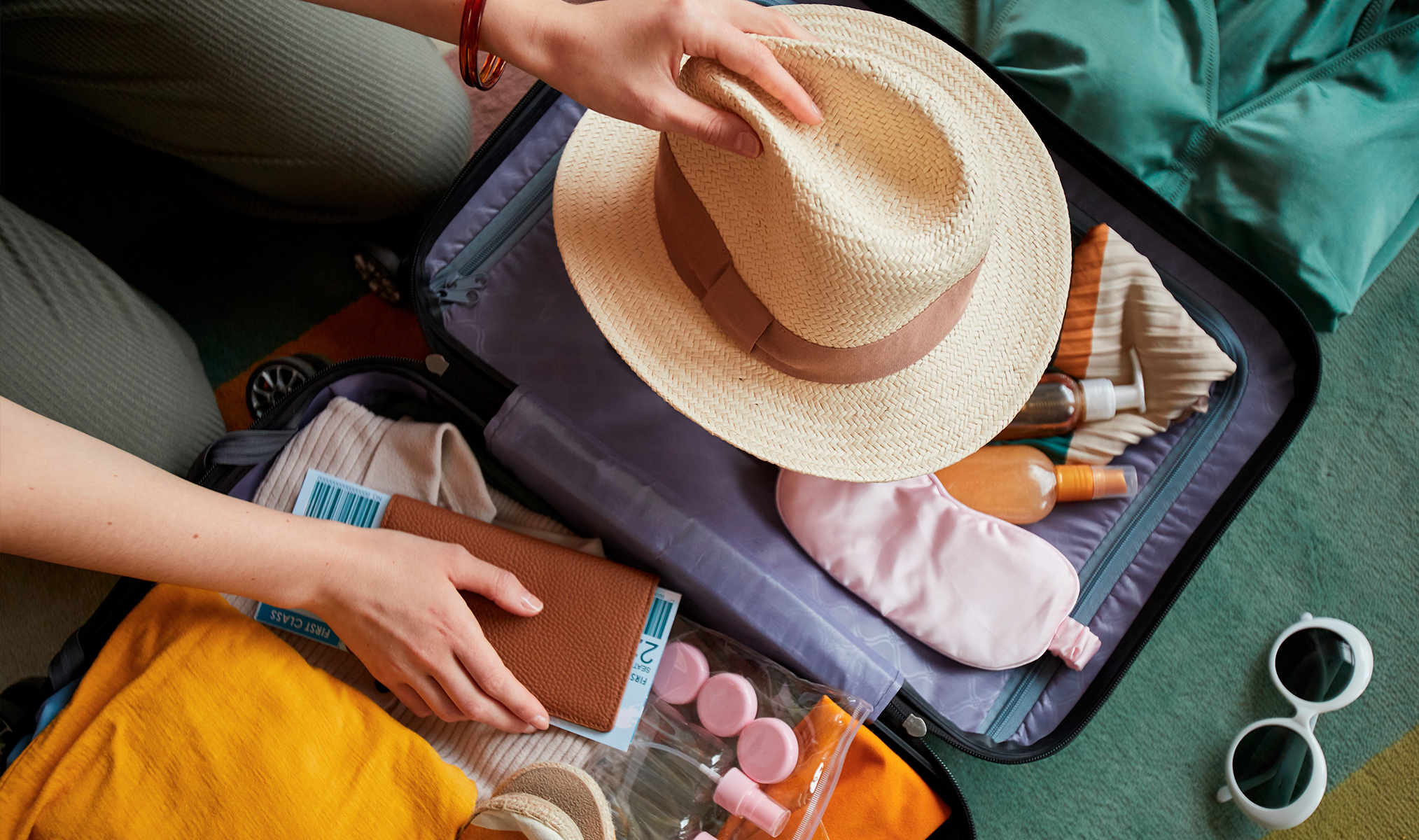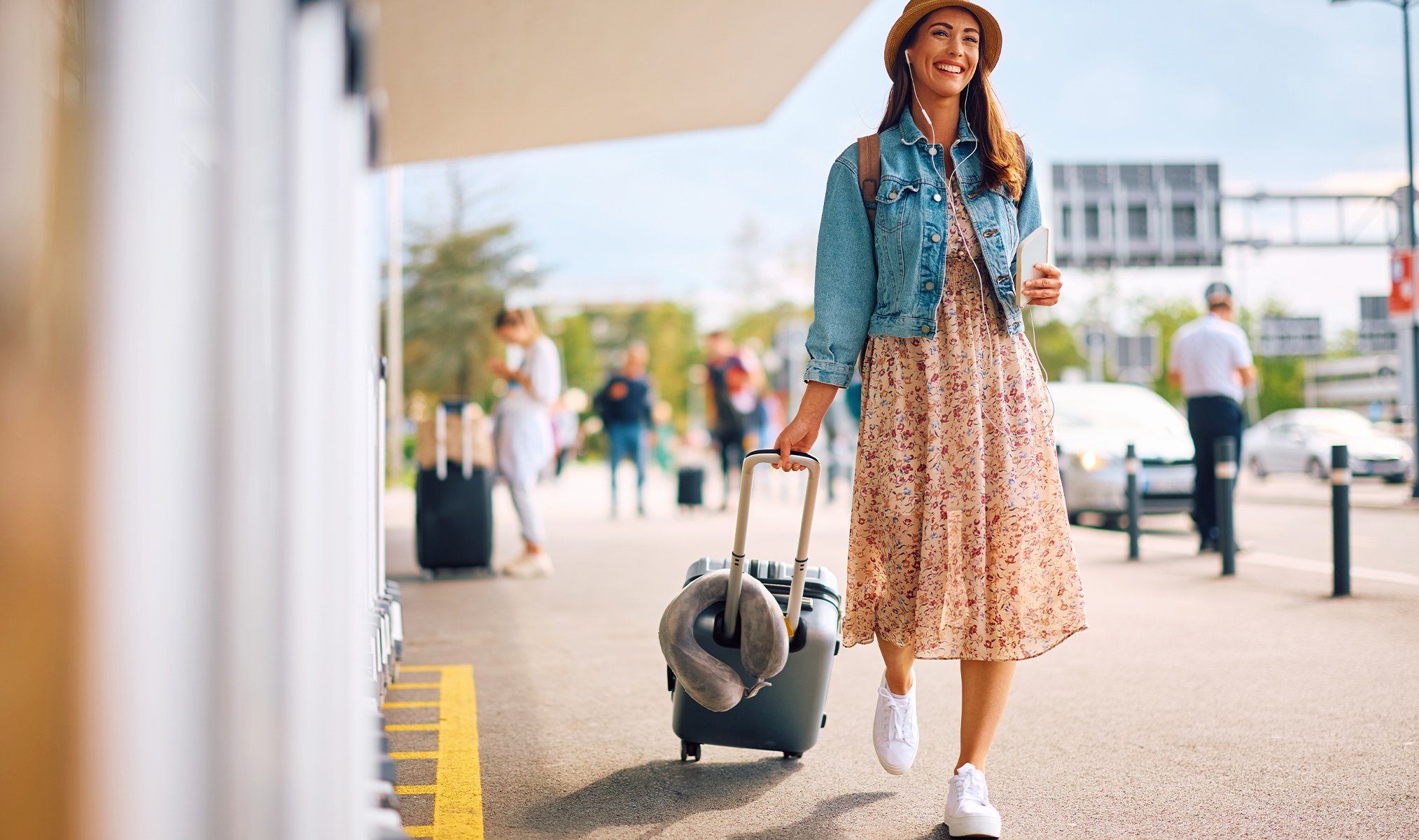Contents
- What to Know as a First-Time Flyer
- Flying Tips for Beginners
- Advice for Flying Alone for the First Time
- Book Your Vacation Accommodation with ZenHotels
What to Know as a First-Time Flyer
2.9 million people fly into and out of U.S. airports every day. If they can do it, so can you. You’ll never be the only person doing it for the first time. They are designed with first-time travelers in mind. Your airline app, boarding screens, and overhead announcements will ensure you go to the right gate for your flight.
The best way to master the art of flying is to be prepared. Double-check your packing list and think ahead to make your traveling experience more comfortable. Are you traveling with your family?
Check out our top tips for flying with small children
Prioritize Packing Light
Dragging around a heavy suitcase and multiple bags can make a stressful experience even worse. In general, you’ll never need as much as you think you do. A packing list can help you be more efficient and maximize space. Your essentials, such as documents, prescription medication, and contacts, should always be in your personal bag. Remember that you’ll be taking your luggage through at least to airports and to and from your accommodation.

Photo: AnnaStills/ Shutterstock.com
Check Your Passport Expiration Date and Travel Documents
How often do you look at your passport? Most of us have a ten-year passport and rarely double-check the expiration date. Before you book a flight, it’s important to ensure your passport is valid for your destination. Previously, it was widely accepted that you could travel with three months left on your passport, but recent changes mean that the general rules have changed to six months. Make sure you have the correct ID for your journey as some domestic routes may allow you to fly with another government-issued ID, such as your driver’s license. Your insurance documents, credit cards, and flight tickets should always be in your personal bag.
Arrive At Least 2 Hours Early
Airports are rarely ever quiet. Airlines recommend you arrive at least two hours before a domestic flight and three hours before an international flight. As a first-time flyer, you’ll want to give yourself extra time to navigate through each part of the boarding process. Expect lines at check-in if you’re dropping off luggage, at security, and if you’re planning to grab food before your flight.
Prepare Your Liquids for Security
Don’t get caught out with liquids. The rules around liquids in carry-on bags are slowly changing and may differ from one airport to the next. Most airports still require all carry-on liquids to be 3.4 fluid ounces or less and fit into one quart-size bag. Other airports may have newer scanners that allow larger liquids and do not require you to remove them from your bag. Check the website for your outbound and return airport for the most up-to-date guidance.

Photo: Zigres / Shutterstock.com
Not Every Route Offers In-Flight Entertainment
While most planes offer in-flight entertainment, this isn’t true for every route. Budget airlines often don’t include entertainment systems or may have limited options. Regardless of your travel route, bring backup entertainment options. Download movies or TV shows to watch without Wi-Fi and bring your own headphones.
Don’t Forget Snacks
An in-flight meal is usually only included on international flights and drinks or snacks might not be included for free. Think ahead and pack snacks to avoid paying on your flight.
Flying Tips for Beginners
Planning is your best friend when flying. There are little things you can do to make your overall experience more comfortable – from avoiding long lines at check-in to staying cozy on the plane.

Photo: Ground Picture/ Shutterstock.com
Download The Airline’s App
Your airline’s app is your best friend when traveling. You can use it to check in early and access a digital boarding pass. Most flights will allow you to check in at least 24 hours before your departure time, but this can be up to 30 days before for other providers. The app will keep you notified of any delays and your gate assignment, including allowing you to access in-flight entertainment or view onboard food options.
Consider Paying for Fast Track Security
If you’re heading to a major airport, you can usually expect security to take at least 20 minutes. Some airports offer the ability to pay for fast-track security for a smoother experience. Check its website to see if this add-on is available. It may automatically be included if you have a business class ticket.
Wear an Airport Security-Ready Outfit
Going through security is where most first-time flyers start to feel anxious. Be ready to get through TSA security by choosing the right outfit. Wear shoes that are easy to remove and avoid wearing accessories like a belt, hat, or heavy jewelry as these will have to be removed before going through the body scanner.

Photo: Monkey Business Images/ Shutterstock.com
When you arrive at TSA security, place your shoes and bags on the scanner belt. A security officer will inform you if you need to remove liquids or electronics from your bag. After this, walk through the metal detector and wait for your belongings to go through the scanner.
You’ll also want to consider the practicalities when planning your outfit. Don’t wear new shoes or clothes you don’t feel comfortable in. Stick to loose-fitting clothing with breathable materials and bring an extra layer, such as a zip-up hoodie, in your personal item.
Double Check Your Bag Size Allowance
Even if you’re checking in for your flight at the airport, your carry-on bag likely won’t be looked at until you’re boarding the plane. Every airline has its own carry-on allowance with most budget airlines limiting passengers to traveling with only one free personal item. It’s important to know the difference between a ‘personal item’ versus a ‘carry-on bag’.

Photo: Drazen Zigic / Shutterstock.com
Your personal item must be placed under the seat in front of you and can be a small backpack, handbag, or laptop bag. By comparison, a carry-on bag is a smaller suitcase or duffle bag that goes into the overhead compartment.
If you’re stopped at the gate to have your carry-on checked, you may be charged an additional fee to bring it onboard if it’s not within your allowance. Double-checking your carry-on allowance will give you extra peace of mind.
Organize your carry-on bag with things that will make your flight more comfortable. A travel pillow is a must-have if you’re traveling internationally or plan to catch a nap during your flight.
Advice for Flying Alone for the First Time
Even if you’ve flown before, going solo for the first time is a different experience. There’s no one there to make sure you get to your flight on time. Our tips above still apply for solo flyers, but there are extra steps you can take to make the boarding process and your flight more enjoyable.

Photo: FaceStock / Shutterstock.com
Book Your Preferred Seat – Even If It’s Extra
Treat yourself if you’re flying solo by booking your preferred seat. Most airlines will charge extra for this privilege, but it’s worth it for extra comfort. Some seats may come with extras, such as additional leg-room, but be aware that an emergency exit row will require you to store all your belongings in the overhead bin during take-off and landing.
Find a Quiet Space at the Gate to Wait
The flight gate is your final hurdle before getting on the plane. Stay alert and find out your gate number as early as possible. Find a quiet space near the gate to relax and wait for the boarding process to start. Remove your headphones or turn down the volume to make sure you can hear the announcements to board at the right time.
Plan Your Post-Flight Transfer
Your journey isn’t over when your flight lands. Think ahead and reduce your anxiety by planning your transfer to your accommodation. Apps like Citymapper can show the best ways to get to your accommodation using public transport or how much you can expect to pay with a ride-share app.

Photo: maxbelchenko/ Shutterstock.com
Book Your Vacation Accommodation with ZenHotels
After your flight, you’ll want to relax in the comfort of your vacation accommodation. Whether you’re backpacking through Europe or planning your honeymoon to New York, we’ve got all your accommodation options sorted.
Secure the best rates on accommodation and hotels in over 220 other countries with ZenHotels. Download the ZenHotels mobile app to access exclusive rates even lower than on our website. Your dream vacation is just a few clicks away.


